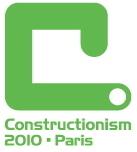

Film Collection > Plenary Talks
Setting Powerful Ideas to Music Sterling Beckwith |
||
| (click here to watch the video) | ||
Soon after first connecting with the Logo Project at MIT 40-odd years ago, the author joined the ranks of those who sought to expand its original pedagogical vision to embrace the arts. The ideals of Constructionism's founders have continued to inspire his efforts to stimulate musical awareness and support creative imagination by helping children to design their own simple musical compositions. In the course of this work, much was learned about music, about young minds, about computing, and about constructive education. Initially, his student research team at York built an extensive library of special Logo-based software routines, designed to drive a series of hands-on exercises and projects in computerassisted musical construction. Successful trials of York's first portable "musical computer" in Ontario schools revealed some basic requirements for an educational environment conducive to creativity. Eventually a commercial software package embodying key ideas from the York project was commissioned for the earliest personal computers. Seymour Papert's insistence that computers can link abstract thinking with concrete know-how was a major influence on this work. However, the nature of children's mental processes while composing remains as much a mystery as it was before computerized music production became widespread. And a recent survey of available software oriented toward composing for beginners reveals disappointingly little attention to its suitability for young users. Some promising exceptions, as well as recent proposals for a radical reorientation of programming itself, could help to awaken new interest in the potential of digital media to stimulate musical thinking and facilitate its expression. While the Constructionist vision of computer-mediated, self-directed learning has inspired successful efforts to energize and enliven the teaching of science and mathematics, a preoccupation with the power and glamour of new media resources has sometimes prevented students from developing the skills and acquiring the life experience they need to undertake serious creative work in the arts. In reviewing some of the chief lessons gleaned from his earlier work, the author, following Papert's injunctions, hopes to contribute to a continuing dialogue about the role of the arts in education, the proper and improper uses of disembodied media, and the various means by which we appropriate and invent new knowledge. |
||
 |
Hosted by Educational Technology Lab @ National and Kapodistrian University of Athens |